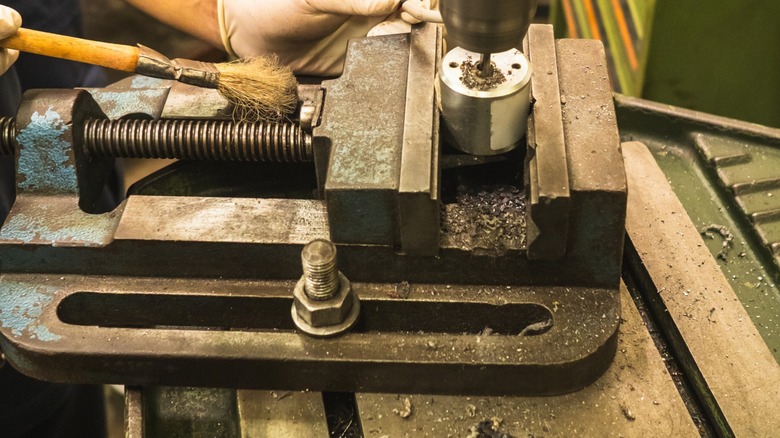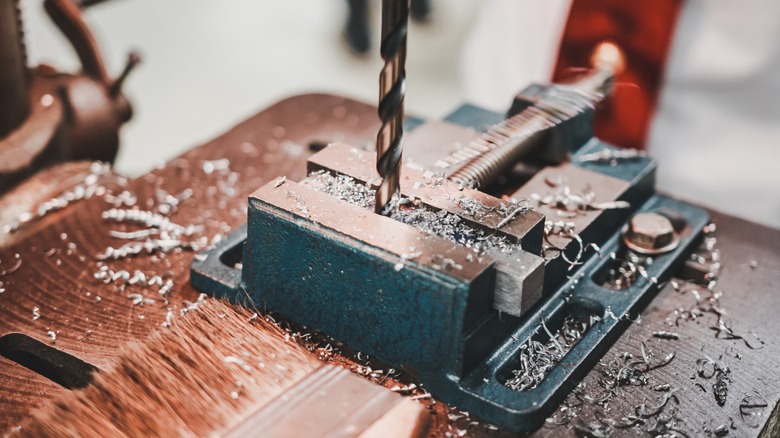What Are The Slots In The Base Of A Drill Press For?
Drill presses come in a variety of sizes from heavy-duty industrial models intended to be bolted to a cement floor, to lightweight designs meant to be secured on top of a bench. Some drill presses are best for woodworking, while drilling larger holes in harder metals ranging from iron to stainless steel requires a rigid setup with extra power.
One of the features that the best drill presses have, regardless of their design or intended purpose, is a way to secure the material you'll be drilling. The drill press table has slots, often called T-slots, cut into it for bolting down a vise or clamping down your work with an assortment of bolts, washers, and nuts (T-nuts or T-bolts being popular options). It's adjustable for height to allow moving your work closer to the drill spindle, which makes the setup more rigid.
The slots in the base of a drill press are used when the work piece is too tall to fit onto the attached table. Like the slots in the table, they can be used for clamping material, attaching a vise, or mounting a custom drill jig if desired.
Can you hold material on a drill press by hand while drilling?
If you're used to drilling small holes in soft material, like wood or aluminum, for example, with a hand-held power drill, you might think you can just hold any material by hand while drilling with a drill press. However, one of the common mistakes everyone makes when using cordless drills and drill presses is that they don't respect them enough.
Even the $169.99 Bauer 10-inch Bench Drill Press from Harbor Freight is driven by a ⅔-horsepower motor and has five speeds to maximize torque at slower rpm. If you were drilling small holes in thin soft wood, you could likely hold the material by hand. Of course, if that's all you were doing, it would likely be easier to use a hand drill.
Typically, people employ drill presses to drill larger holes in harder material than is comfortable or practical with a cordless drill. In this case, the material should not be held by hand. Ideally, the material should be held in a vise, mounted to the drill press table or base, or clamped directly to one of those surfaces.

